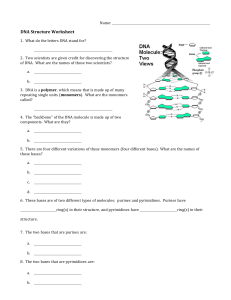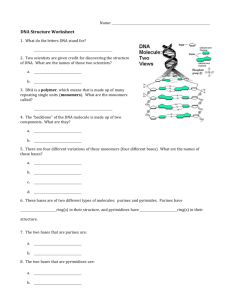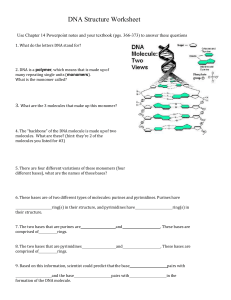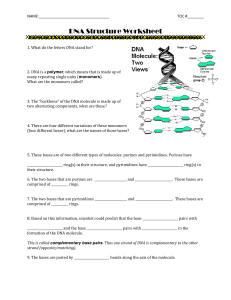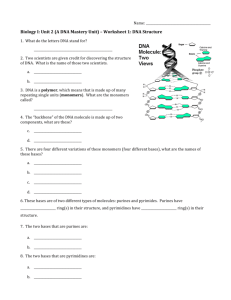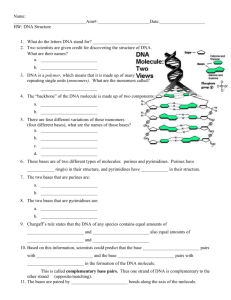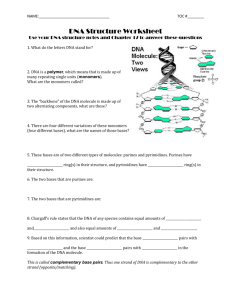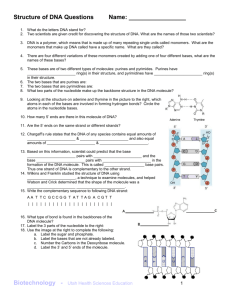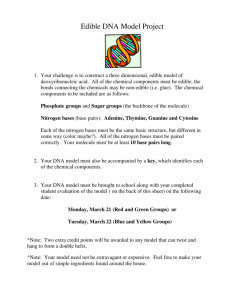Genetics 1. What do the letters DNA stand for? 2. Two scientists are
advertisement
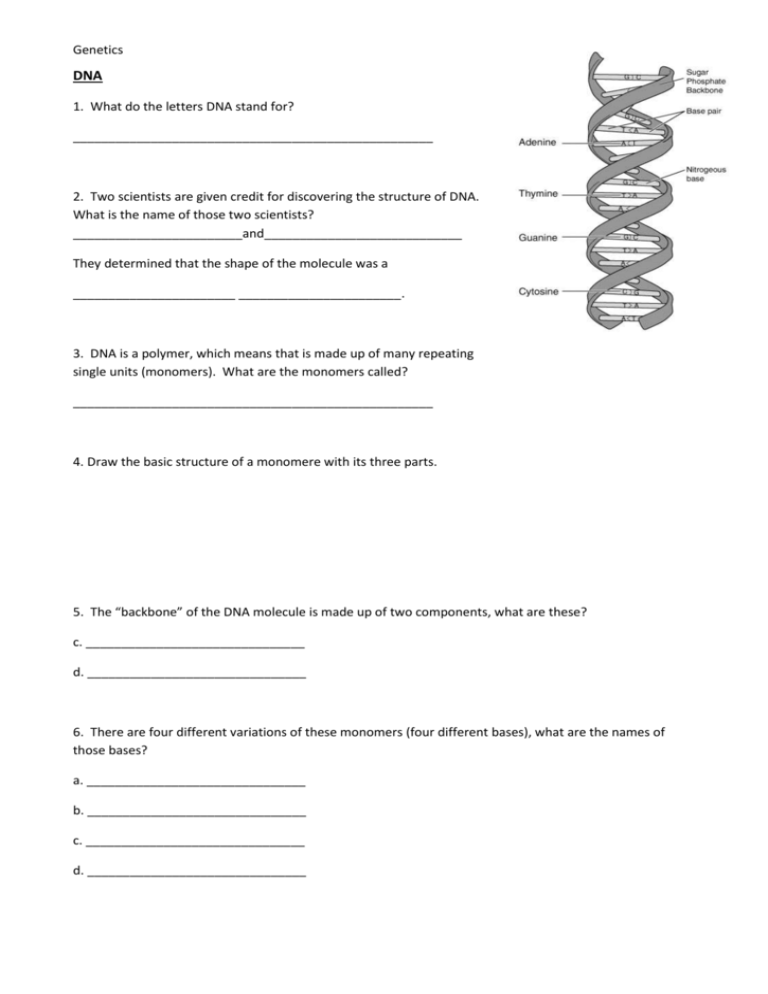
Genetics DNA 1. What do the letters DNA stand for? ___________________________________________________ 2. Two scientists are given credit for discovering the structure of DNA. What is the name of those two scientists? ________________________and____________________________ They determined that the shape of the molecule was a _______________________ _______________________. 3. DNA is a polymer, which means that is made up of many repeating single units (monomers). What are the monomers called? ___________________________________________________ 4. Draw the basic structure of a monomere with its three parts. 5. The “backbone” of the DNA molecule is made up of two components, what are these? c. _______________________________ d. _______________________________ 6. There are four different variations of these monomers (four different bases), what are the names of those bases? a. _______________________________ b. _______________________________ c. _______________________________ d. _______________________________ Genetics 7. These bases are of two different types of molecules: purines and pyrimides. Purines have _______________________ ring(s) in their structure, and pyrimidines have _______________________ ring(s) in their structure. 8. The two bases that are purines are: a. _______________________________ b. _______________________________ 9. The two bases that are pyrimidines are: a. _______________________________ b. _______________________________ 10. Chargaff’s rule states that the DNA of any species contains equal amounts of ___________________ and _______________________ and also equal amounts of ________________and _________________. 11. Based on this information, scientist could predict that the base _______________________ pairs with _______________________ and the base _______________________ pairs with ___________________ ____ in the formation of the DNA molecule.This is called complementary base pairs. Thus one strand of DNA is complementary to the other strand (opposite/matching). 12. The bases are paired by _______________________ bonds along the axis of the molecule. 13. Write the complementary sequence to following DNA strand: A A T T C G C C G G T A T T A G A C G T T 14. What is gene? 15. What is difference between exons and introns? exons ______________________________________________ introns _____________________________________________
